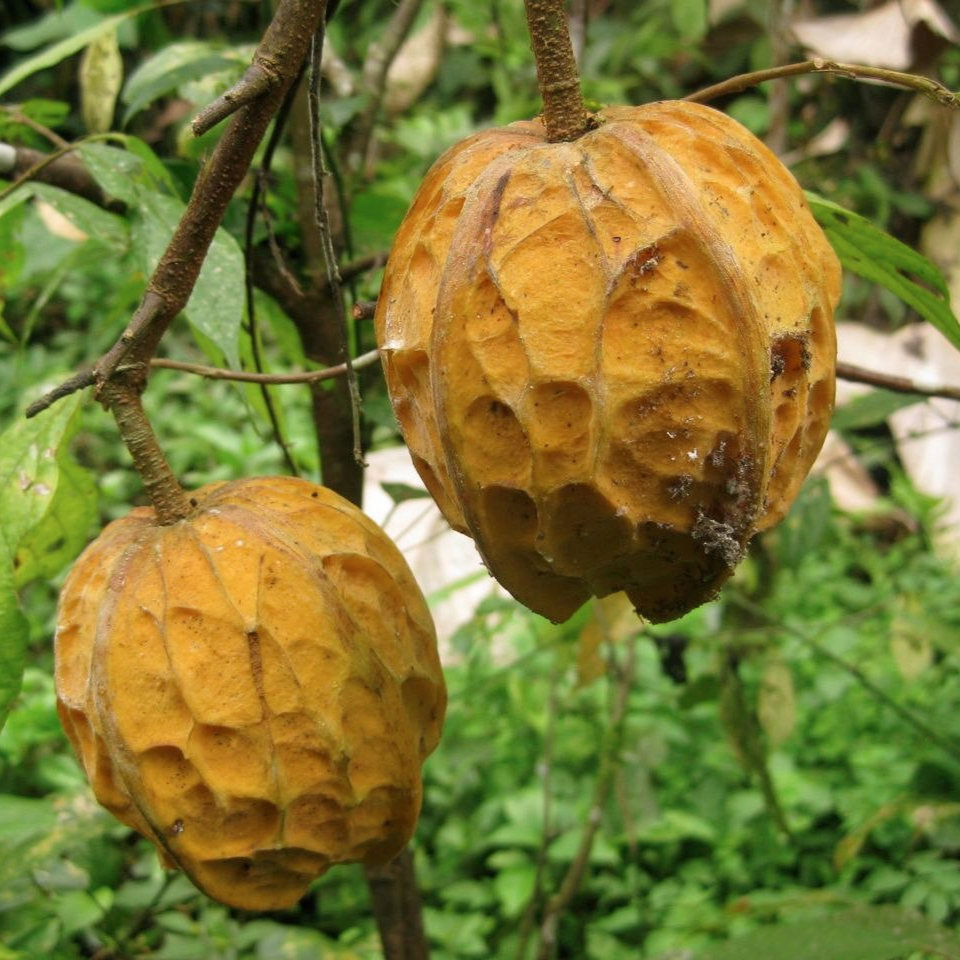 Image 1 of 3
Image 1 of 3

 Image 2 of 3
Image 2 of 3

 Image 3 of 3
Image 3 of 3




Theobroma gileri "Cacao de Monte"
Theobroma gileri, commonly known as "Cacao de Monte", is a rare wild relative of cultivated cacao (Theobroma cacao) native to the humid lowland rainforests of western Ecuador. It typically grows in shaded understory environments, where it produces small, ridged pods with thick shells. Inside the pods, the seeds are surrounded by a sweet, aromatic white pulp that is edible and sometimes used fresh by local communities. Though similar in appearance to cultivated cacao, T. gileri is genetically distinct and remains largely undomesticated.
This species is of growing interest to researchers and conservationists due to its potential genetic resistance to diseases like witches’ broom and frosty pod rot, which threaten global cacao production. Theobroma gileri could play a key role in future breeding programs, offering traits that improve the resilience of cultivated cacao varieties. As a result, conserving this species in its native habitat is essential not just for biodiversity, but for the long-term sustainability of chocolate production.
Seeds are shipped in packs of 1, shipped in humid vermiculite.
Theobroma gileri, commonly known as "Cacao de Monte", is a rare wild relative of cultivated cacao (Theobroma cacao) native to the humid lowland rainforests of western Ecuador. It typically grows in shaded understory environments, where it produces small, ridged pods with thick shells. Inside the pods, the seeds are surrounded by a sweet, aromatic white pulp that is edible and sometimes used fresh by local communities. Though similar in appearance to cultivated cacao, T. gileri is genetically distinct and remains largely undomesticated.
This species is of growing interest to researchers and conservationists due to its potential genetic resistance to diseases like witches’ broom and frosty pod rot, which threaten global cacao production. Theobroma gileri could play a key role in future breeding programs, offering traits that improve the resilience of cultivated cacao varieties. As a result, conserving this species in its native habitat is essential not just for biodiversity, but for the long-term sustainability of chocolate production.
Seeds are shipped in packs of 1, shipped in humid vermiculite.

